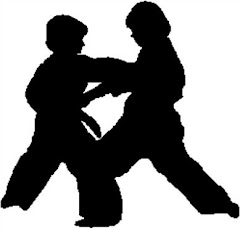How to Understand Karate
Author: Jimmy CoxAlthough practiced widely in Japan, the art of present day Karate was introduced into that country less than fifty years ago by Funakoshi Gichin.
Actually, the art of Karate can be traced back to the ancient Chinese art of Kempo. Legend has it that Kempo originated during the Liang dynasty when a Buddhist monk named Taishi taught this art to monks in the Shaolin-szu Monastery as a means of defense against militant aggressors and as a way of building up their weakened physical condition.
Taishi preached that for the true understanding of religion, the body and soul should be strong and inseparable, and that in a weakened physical state the necessary religious practices could never be adequately performed. In time, these monks became such powerful unarmed fighters that people from all over China came to study at their monastery in order to learn the art of unarmed defense.
Around 1600 A.D., the Chinese who occupied Okinawa introduced their art of Kempo to the Okinawans, who combined it with their native form of unarmed fighting, which in later years developed into Karate.
When Karate was finally introduced into Japan, it very quickly became popular and gained tremendous following and interest. In later years it was refined into what we know today as Japanese-style Karate.
The Karate Striking Techniques
The underlying principle behind the correct striking technique is that we must transmit the maximum concentration of force from the entire body, through the striking point, into the target area. Unlike the gun, knife or club, the striking point is the real weapon of the practiced Karate man. It cannot be bought in the store, but must be conditioned through practice and training.
Although an effective blow can be delivered without building up a callous on the striking point, it is nevertheless true that you can strike an even more effective blow, with less sensitivity to yourself, by conditioning the striking points.
The most commonly used striking point is the clenched fist. The clenched fist in Karate is not a simple closing of the hand, but a clenching of the fist so that the center point between the knuckles of the middle and forefingers lies on an imaginary line running through the center of the forearm. Also, the wrist is not bent, and if an imaginary plane ran through the front of the fist, it would be perpendicular to the arm. When using this striking point, the direction of the blow can either be forward, up or down.
When counter-attacking to the eyes or solar plexus, the tip of the first finger is an effective striking point. The direction of the blow can be forward or up or down, with a dig or even a stab.
Also effective in a counter-attack to the eyes is the use of the tips of the first and second fingers. Oftentimes this can be used to temporarily blind your opponent so that you can deliver an effective follow-up counter. Remember, the hand is faster than the eye? And a quick stab should momentarily make an opponent helpless.
There is much more to learn about karate, but this will set you off in the right direction.
Never Be Afraid Again - Learn How To Defend Yourself From Any Attack
Click here for FREE online ebook!
http://www.martialartsstyles.org/
Article Source: ArticlesBase.com - How to Understand Karate


No comments:
Post a Comment